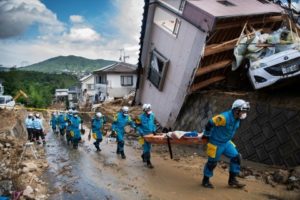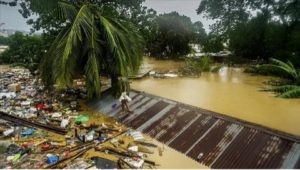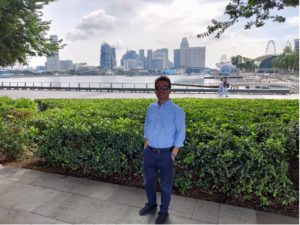Last month I was in Singapore, a chance to reconnect with long-standing and new partners, who in many instances I’d never met in person due to restrictions over the last two years. This trip was an opportunity to understand more about clients’ needs and to promote Global Parametrics’ appetite to write risk in the region.
It had been 20 years since I was last in Singapore and arriving in the city I was astounded. Traditional old buildings stood alongside soaring modern skyscrapers, yet nothing looked out of place. It is a city that thrives on innovation and new thinking, whilst at the same time being unashamedly conservative – a metaphor for the risk transfer industry perhaps?
Singapore is known as the gateway to Asia. A region especially impacted by extreme weather and natural hazards. Tropical Cyclones, Earthquakes, Volcanos and Tsunamis are regular occurrences, whilst climate change is increasing the frequency and severity of drought, rainfall and flood. It can be all too easy to focus on these events in isolation and create distance from the reality of their devastation. Being in the places, with the people, that these events put at risk is always a stark reminder of the human, social and economic impact of our changing climate and natural hazards.
Across Asia, the climate emergency is a present reality creating increased risk. According to the Global Climate Risk Index, Japan and the Philippines are the most impacted countries by climate change today, making them a clear priority for disaster risk resilience and reduction. But just as diverse are the cultures within and across the countries that make up the region, so too are their vulnerabilities to extreme weather and natural hazards.
Home not only to some of the world’s highest peaks, remote small islands and low-lying plains, Asia is also home to some of the world’s most densely populated urban areas as well as vast rural communities, often dependent on land and local ecosystems for their livelihoods and way of life. While it has witnessed the rapid industrialisation and development of some of the world’s most important economies, the reality of chronic poverty and underdevelopment remains true for many. This creates diverse risk and socio-economic impacts of extreme weather and natural hazards, but for all, financial resilience is critical.


This is where parametric products have a key role to play.
Global Parametrics has always been keenly focused on how our products and solutions can be deployed to meet these challenges and demands in Asia. In the Philippines, we are an investor in their World Bank issued Catastrophe Bond, we support Climbs Insurance enabling them to offer their ‘Weather Protect’ product to agricultural co-ops, and we have been running the B-Ready, forecast tropical cyclone aid program with Oxfam Philippines since 2018. In India our work includes supporting AIC’s parametric crop insurance program for the state of Bengal and we have risk across the region in countries such as Vietnam, Cambodia, Myanmar, Sri Lanka and Nepal.
Typically, re/insurers, and therefore brokers and the entire risk supply chain have been focused on offering solutions for Natural Catastrophe risk, such as Earthquake and Tropical cyclone, or government crop programs. But there is so much more risk out there, and more and more clients are finding these are excluded from or prohibitively priced in their traditional indemnity coverages. Parametrics is a way to look at some of this risk differently, managed in a more pro-active way and therefore mitigated.
On the flight back I reflected on what I had learnt in Singapore through discussions with our partners. Climate change is here, it is being felt, and solutions need to be focused on local businesses, local challenges and local people. We need to do more, faster, to build financial resilience in these uncertain times.
By Toby Behrmann



